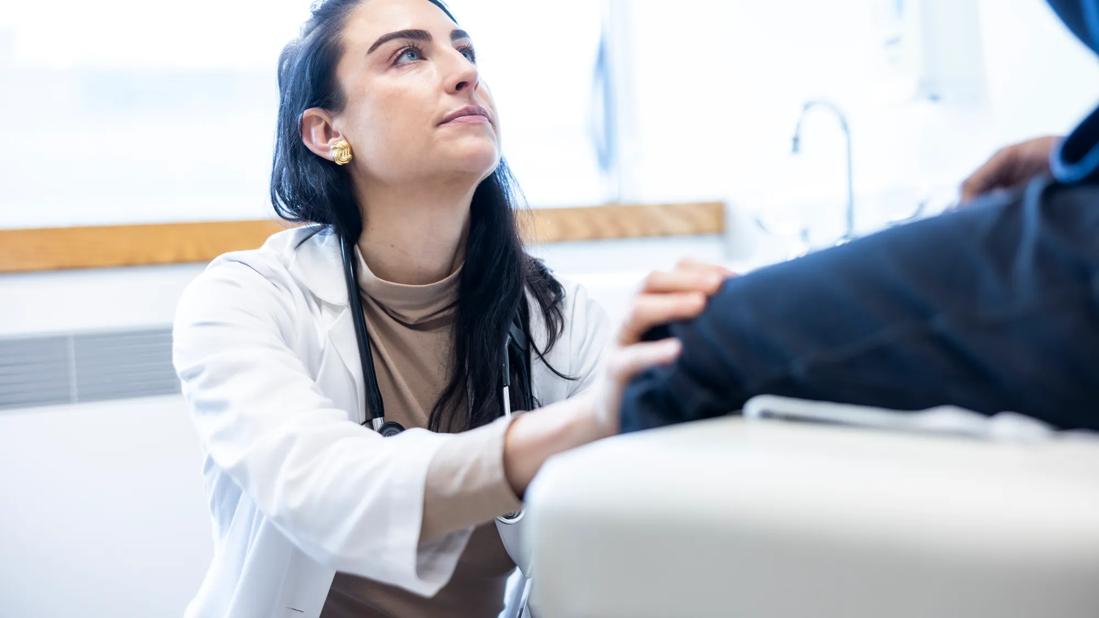Pediatric providers are uniquely positioned to empower adolescents to stop the abuse

It’s a shocking statistic: One-third of women in the United States report having experienced physical or sexual violence in an intimate relationship. A study of college-age women found nearly half had been victims. Among high-school girls who have been in a relationship, the prevalence is 21%.
Advertisement
Cleveland Clinic is a non-profit academic medical center. Advertising on our site helps support our mission. We do not endorse non-Cleveland Clinic products or services. Policy
The reasons for this disturbing trend are many and varied, but add up to a single reality: “It’s a learned behavior role modeled to boys and men as normal and viewed by many women as ‘That’s just how it is,’” says Ellen Rome, MD, MPH, Head of the Center for Adolescent Medicine at Cleveland Clinic Children’s.
Intimate partner violence (IPV) has lifelong ramifications in the form of poor mental and physical health and social outcomes. Pediatric providers are uniquely positioned to identify at-risk adolescents and provide supportive counseling and information.
“We should be asking what we can do to prevent IPV,” she says. “We are in a beautiful position to address this issue, because kids are in our offices fairly often. We must create a safe place for them to think, give them the tools to make good decisions and know how to communicate the information in a non-threatening, non-judgmental way.”
Being raised in a home where a parent was physically, emotionally or sexually abused increases the likelihood a child will become involved in an abusive relationship. Witnessing abuse between parents or from parents increases the likelihood of experiencing IPV five-fold.
Other risk factors include depression, alcohol or drug use, being the focus of bullying or teasing, experiencing marginalization or discrimination, or having a disability.
“Adolescents may not recognize particular behaviors as abusive. For example, they may misread controlling behaviors as evidence of true love, especially if they have not had role models of healthy relationships,” she explains.
Advertisement
Because the frontal cortex of adolescents is not fully developed, they don’t always understand the implications of their actions.
There are many reasons young women involved in IPV may be reluctant to ask for help. These range from lack of trust in adults, fear of their partner and fear of breach of confidentiality, among others. Nevertheless, its signs, symptoms and patterns of behavior are red flags that physicians can easily pick up.
Externalized behaviors may include aggression, attention problems, bullying or substance abuse.
Examples of internalized behaviors are school avoidance, somatic complaints, suicidal ideation and withdrawal.
Depression is not uncommon. “We recommend using the PHQ-9 depression screening tool on kids who seem stressed and following up with questions in the office or during virtual visits,” says Dr. Rome.
Pregnancy or sexually transmitted diseases should raise a red flag. “Be alert to the form of IVP known as reproductive coercion, in which the partner is pressured to become pregnant, or contraceptive efforts are sabotaged,” says Dr. Rome. “The pattern may include repeated physical abuse and injury, progressive isolation, intimidation, demanding sex and practicing other controlling behaviors.”
Pediatric providers can be key allies in supporting patients. As Dr. Rome explained in a recent article in Pediatrics in Review, there are effective ways to help patients break away and cultivate healthier relationships.
“The goal is not to get a patient to disclose experiences of violence, if that does not feel safe to them, but to ensure they receive information about IPV and its effect on their health,” she says.
Advertisement
Because teens are just beginning to form relationships, the time is ideal for pediatricians to discuss examples of unhealthy relationship behaviors and reinforce that everyone deserves to be treated with respect and trust.
“Be nonjudgmental. Hear and offer support. Don’t push for disclosure,” she recommends.
“Explaining that you ask all your patients about the relationships they are in makes a discussion less threatening. Use open-ended questions, such as, ‘Has anyone ever done anything sexually that made you feel uncomfortable?’ or ‘Has your boyfriend ever monitored your texts or phone calls?’” she says.
Once you have broached the issue, make sure the patient leaves with some educational materials to give them a sense of empowerment and support. This may take some advance work on your part.
“Call your domestic violence hotline and ask what happens when a patient calls,” she suggests. “Check out www.thatsnotcool.com. Find a hotline for sex trafficking victims and other resources that are available in your area.”
She suggests printing these resources on a 3 x 5 card and putting it in the office bathroom for teens to pick up when they give a urine sample. Alternatively, print the information on a poster they can snap with their phone.
Be proactive in practicing harm reduction by preventing unwanted pregnancy and STIs.
“Tell them they can use birth control their partner doesn’t have to know about. Teach them about emergency contraception and how to get tested for STIs,” she says. “You can always suggest that if they don’t need this information, maybe they have a friend who does.”
Advertisement
Because IPV is primarily initiated by the male in a relationship, boys need to know the behavior is not okay.
“We can play a role in educating our male patients about healthy, respectful relationships and reinforcing they don’t want to be part of the ‘me too’ movement,” says Dr. Rome. “Our job is to keep all kids safe and help them grow into healthy adults.”
Advertisement
Advertisement

Integrated care model reduces length of stay, improves outpatient pain management

A closer look at the impact on procedures and patient outcomes

Experts advise thorough assessment of right ventricle and reinforcement of tricuspid valve

Study also finds that 26% of children with cancer have mutations in DNA repair genes

A closer look at current uses and future opportunities

Experts are challenging the one-size-fits-all paradigm

Quality improvement project addresses unplanned extubation

Cardiac imaging substudy is the latest paper originating from the VANISH trial